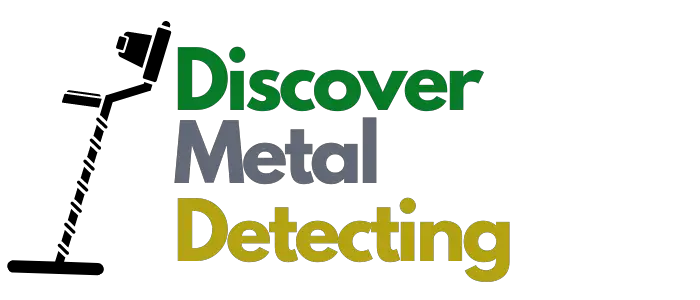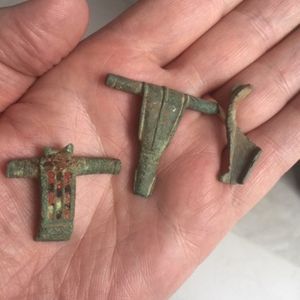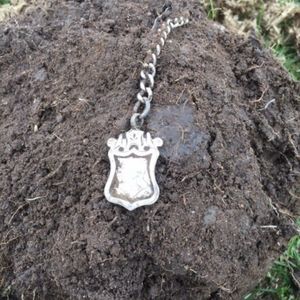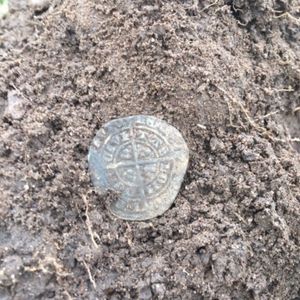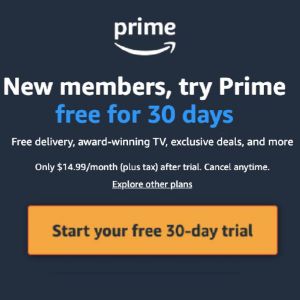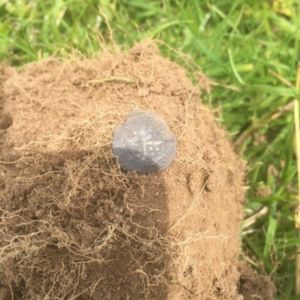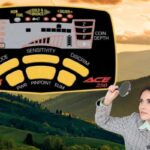Quest Metal Detectors
Quest are a relatively new metal detector manufacturer that was started by metal detectorists. It’s aim was to link detectorists with the most advanced technology but remain affordable.
The Quest company actively describe themselves as commited to the recovery of artifacts, coins, and all significant, important items.
The Quest line of metal detectors and accessories reflect not only cutting edge technology but also value. The ambition was to give detectorists the best technology for a price point.
Quest metal detectors and accessories are described as being in their “own league” as far as technology and affordability. Their detector designs incorporate feedback from users.

The detectorists favourite features have been combined with Quest’s own unique features so when combined have produced winning products.
Whether you hunt on land or in the water and no matter what type of treasure you’re after, Quest say that they have you covered.
The Quest name in fact has been chosen from over 3000 potential names that were submitted by detectorists from all over the world.
Every year they sponsor metal detecting rallies to encourage more people to join the hobby. They also keep investing more than 30% of their revenue into developing the latest technology.
They seem to value their customers and dealers by delivering high quality metal detectors and accessories for them with great backup.
The Quest company within the metal detecting industry is comparatively new compared to some other manufacturers as their story and journey starts in the 2000s.
They are based in Los Angeles, California but also have an E.U. office located in Lippenhuizen, the Netherlands. Chinese developers have also been instrumental and are a huge part of this company.
Quest Q30 price
The Quest Q30 comes in a couple of forms. The Q30 base model can be had for around £300 and the Q30+ can be had for around £400. (£299 and £399 respectively)
The only main difference between the two models is that the Q30+ has the Bluetooth capabilities built into the main module whereas the Q30 doesn’t.
This means that the Q30 would have to be used with wired headphones where the Q30+ can use wireless headphones. In fact, the Quest Q30+ WireFree Lite headphones are included within the price.
You can find a Quest Q30 over on Amazon here. At the price points of £299 and £399, the only real competition is the multi frequency Minelab Vanquish 440 and 540 respectively, the Minelab XTerra Pro and the Nokta Simplex+.
You can read my indepth articles on multi frequency technology here and the Minelab Vanquish series here.
Quest Q30 Metal Detector
So, we’ve covered a little about Quest’s background and also the price points of the Q30 and Q30+, along with the main difference between the two models.
The Q30 sits firmly in Quests mid range of detectors they have. The comprises on the X5, X10, Q30 and Q60. Only the Q60 sits above it.
You can read my article which looks more in depth at the excellent entry level Quest X5 metal detector. This is a great beginner machine. Read my metal detecting for beginners article here.
However, let’s take a look at the Q30 specification and what you get for the price point. At first glance, you’ll notice that the Q30 incorporates many features normally found on more expensive machines.
You can’t help but think that this was a result of many consultations with metal detectorists in the field asking what features they’d prefer.
Quest Q30
There are a number of features on the Q30 which not by chance you’ll find on more “advanced” machines. Namely from either Nokta or Minelab.
At a glance, these include the magnetically attached charger cable (found on the Minelab Equinox) and silent handle vibration target alerts (found on Nokta machines).
The Q30 also ships with a larger DD type search coil which has great advantages. Read my article on understanding metal detector coil types here.
Also, similar search modes are apparent that are shared between these two top end machines. Namely, Park, Field and Beach modes.
Another high end feature included in the Q30 specification is the “FESEN” (Ferrous Sense) function. Similarly initially included late to the Minelab Equinox specification but is called “Iron Bias”.
Quest Q30 screen

The layout of the screen and also the positions of the control buttons have been specifically designed for the purpose of making adjustments as quick as possible without scrolling through multiple screens.
This is achieved via two touch pads on the upper left side, a touch pad on the upper right side and finally five touch pads to the control box face.
The two on the left control the audio volume and target vibration setting, the touchpad on the right controls the backlight and wireless headphone Bluetooth. (on the Q30+)
Finally the 5 pads control the Sensitivity level and scrolls through the menu option, engages the non-motion pinpoint function, the power on/off, Notch accept/reject and the Ground balancing.
Quest Q30 Search modes
Park Mode
As its name suggests, this mode will suit detecting in areas that have a high density of trash (like parks). It must be remembered however that park hunting in the US is normal.
In the UK, anyone detecting in a park would technically need permission as all land belongs to someone. In the case of parks, the local authority and subsequently the Crown!
You can read my article discussing if metal detecting is legal here. This covers the basics of where and what you can do and where you can go.
Remember, trash can be looked upon as being ferrous (iron) and non-ferrous. (typically aluminium foil) so be prepared to dig some trash items. Extra segments can be notched to help reduce this.
Due to the close proximity of accepted and rejected targets, the “recovery speed” (which is the time a detector takes to reset after passing over a previous target) is increased to help target separation.
This recovery speed is set faster than it is in Field mode which we’ll cover now.
Field Mode
This mode is designed for use as its name suggests on fields where targets may be spread out a little more and often a bit deeper than in a park environment.
In this environment, unwanted items are ‘usually’ ferrous (iron) in nature. The recovery speed is set slightly lower in Field mode.
This helps in the detection of deeper targets and provides more stable target ID numbers as it gives the Q30 more time to process target data.
Again, as in Park mode, further adjustments can be made to the number of tones, their break points, the sensitivity to iron (FESEN) and discrimination notches.
Wet sand & Saltwater modes
These two modes have been specially designed to cope with mineralised saltwater beaches with black sand and for detecting into the surf.
The ground balancing in these modes is a lot more aggressive in order to help cope with the harsh conditions that black, wet sand and salt water can present.
It’s recommended by the Q30 engineers that if you plan on detecting on the dry beach part, the Park or Field modes should be chosen as they will give you additional functionality and won’t be as aggressive.
I have a useful article on beach metal detecting here and also an article that discusses beach metal detecting as a possible extra income idea here.
Gold 1 & Gold 2 modes
In reality, if you are primarily hunting in the UK, you probably won’t ever use these modes. Metal detectors get shipped all over the world so in some countries, these modes are useful.
They do operate slightly differently than the other modes in the fact that they have an audible background ‘threshold’ tone that can be described as a ‘whistle’ or ‘hum’.
Larger accepted targets and shallow targets will give you a noticable ‘beep’ but smaller or deeper targets will just cause the threshold hum to raise slightly.
These modes do take a little practice to master but offer great fun. Usually in the gold fields of Australia or America, the gold nuggets can be small and quite deep where this mode can excel.
How does the Q30 perform?
The depth and recovery speed of the Q30 is very impressive! When coupled with the amount functionality and adjustability, it really does make a sound choice of investment.
Below is a video made by Sid from his “England’s History” Youtube channel. Sid is a very well respected and knowledgeable detectorist who’s also a stand up guy. Check out his views on the Q30.
Final Quest Q30 thoughts
In my opinion, the Quest Q30 is one of the best single frequency metal detectors available in the sub £300 bracket. The 14 Khz operating frequency makes it the perfect all rounder.
The only serious contender in this sub £300 price bracket is the Minelab XTerra Pro and Nokta Makro Simplex+. You can read my article on the Nokta Makro Simplex + here.
You can also read my more in depth article on the Minelab XTerra Pro here.
The Q30’s depth is extraordinary and the recovery speed for target separation is excellent. It also carries many advanced features only found on higher end machines.
The Q30 is the sensible choice but in my opinion, you’d kick yourself later for not getting the bluetooth enabled Q30+. It is a little more but you do get the quality Quest wireless headphones included.
At sub £300, the only real contender here in this price bracket is the Minelab Vanquish 440 which effectively is the same price or the switchable frequency XTerra Pro.
The main advantage here is that Minelab have somehow packed into the Vanquish range their multi frequency, “Multi-IQ” technology. (You can find out about multi frequency technology here.)
Instead of operating on one VLF frequency, the Vanquish operates on 5 frequencies. This does have distinct advantages. In fact, the same technology is inside the cheaper Vanquish 340 at sub £230!
However, the Q30 is a cracking detector and in most cases, it will absolutely find whatever you walk over. It also has a wealth of accessories to choose from. Find a Quest Q30 over on Amazon here.
My choice would be the Vanquish 440, then the XTerra Pro, then the Quest Q30 but it really depends on the main places you wish to hunt. If it’s beaches, go for the Vanquish with its multi frequency technology.

Unbeatable Multi Frequency!
You can now get the ultimate power of multi frequency technology over single frequency detectors with the Minelab Vanquish range of detectors.
The entry level Vanquish 340 now gives you ultimate depth, stability and sensitivity on all target types in every soil, including wet beach sand.
